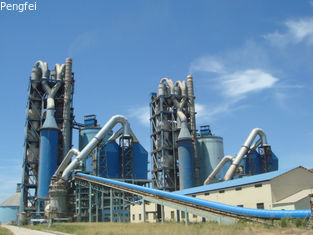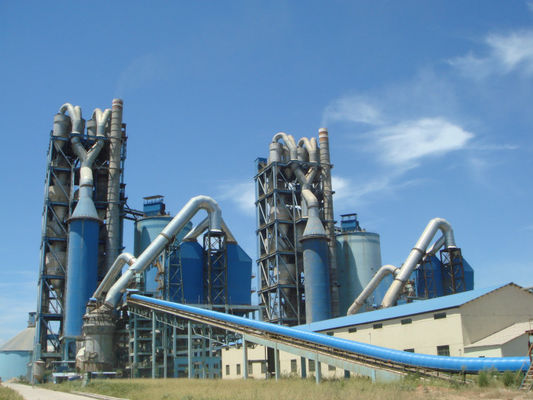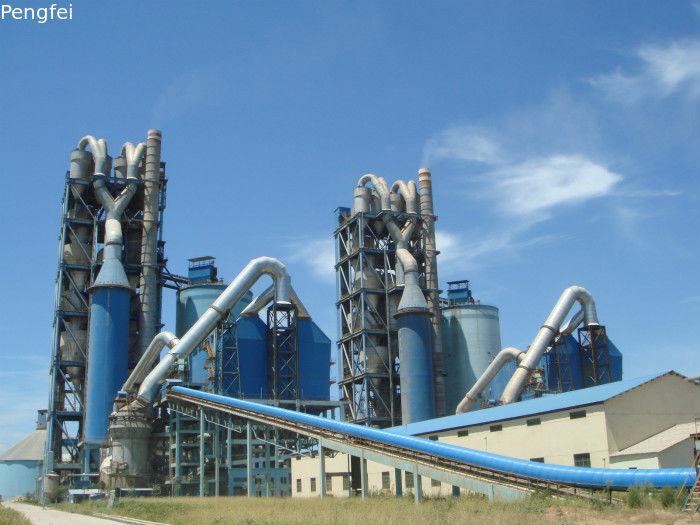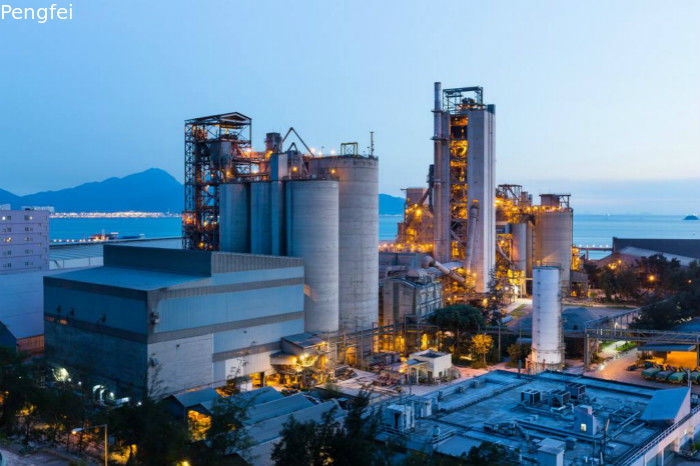-
Highlight
500TPD Rotary Kiln Cement Plant
,Limestone Rotary Kiln Cement Plant
,500TPD Cement Processing Equipment
-
ProcessDry Process
-
Capacity1000tpd
-
Automatic LevelCompletely Automatically
-
WeightAs Per The Process
-
Raw MaterialLimestone,clay,iron Ore Etc
-
Workign Days330 Days
-
Working Hours24 Hours
-
ColorAs Per Your Requirements
-
Place of OriginJiangsu
-
Brand NamePengfei
-
CertificationCE,ISO
-
Model Number1000tpd
-
Minimum Order Quantity1 set
-
PriceUSD8000000-USD16000000
-
Packaging DetailsAll the packing is suitable for the ocean transporting and inland transporting,1.The kiln shell is transported in 6 sections. 2.The supports is packed on the cushion.3. the small parts is packed in wooden box and iron frame.4.there will be shipping mark on
-
Delivery Time360 days
-
Payment TermsL/C, T/T
-
Supply Ability1 SET PER 360 DAYS
Limestone Clay 500TPD Dry Process Rotary Kiln Cement Plant
WELCOME TO JIANGSU PENGFEI GROUP CO.,LTD
Limestone Clay 500TPD Dry Process Rotary Kiln Cement Plant
Cement production method
The production process of cement is simply two grinding and one sintering, that is, raw materials are mined, crushed, ground and mixed to produce raw materials. Raw materials are fired at 1450 ~ C high temperature to produce clinker. Clinker is crushed and ground together with gypsum or other mixed materials to become cement. Due to the difference between dry and wet raw meal preparation, the production methods are divided into three types: wet process, semi dry process or semi wet process and dry process.
Characteristics of wet process production
The raw meal is made into slurry with water content of 32% - 36%, which is dried and fired into clinker in rotary kiln. Wet preparation of slurry, grinding energy consumption is low, about 30%, slurry is easy to mix, raw meal composition is stable, conducive to firing high quality clinker. The unit heat consumption of clinker in rotary kiln is 2093 ~ 2931kt / kg (500-700kcal / kg) higher than that of dry process kiln. The temperature of clinker discharged from the kiln is lower, so it is not suitable to burn clinker with high silica and high alumina content.
The raw material requirements
1. Clay type raw material, Like loess, Clay. shale etc.
| class | n | p | MgO | R2O | SO3 | Cl- |
| Class A | 2.7~3.5 | 1.5~3.5 | <3.0 | <4.0 | <2.0 | <0.015 |
| Class B | 2.0~2.7 3.5~4.0 | Not limited | <3.0 | <4.0 | <2.0 | <0.015 |
Maching capacity
![]()
![]()
Process description
(1) Limestone crushing and transportation
After limestone is conveyed from mine to plant, if crusher is switched on, LS will be directly unloaded to receiving pit, and then by heavy duty apron feeder sent to single hammer crusher PCF1616 to be crushed, if crusher is switched off, LS will be unloaded to open-air stockpile, and then sent to receiving bin via loader for crushing.
The crushed limestone is sent to two limestone dosing silos (dia.Φ12m) by belt conveyer, elevator and tee valve.
(2) Auxiliary material crushing and conveying
When the exclusive receiving pit is free, clay is unloaded directly to the pit, and then sent to clay proportioning silo via apron feeder, tooth crusher, belt conveyer and elevator. When the receiving pit is full, clay will be firstly stacked at shed, and then conveyed by forklift to receiving pit when it is free, at last, it is conveyed to clay proportioning silo by apron feeder, crusher, belt conveyer and clay proportioning silo.
When the exclusive receiving pit is free, iron ore and sandstone is unloaded directly to the pit, and then sent to respective proportioning silo via raw crusher, elevator. When the receiving pit is full, they will be firstly stacked at shed, and then conveyed by forklift to receiving pit when it is free, at last, it is conveyed to respective proportioning silo by crusher and elevator.
(3) Coal homogenization
Raw coal is unloaded directly to the pit after coming into plant, and then sent to raw coal preblending stockpile via apron feeder, belt conveyer, elevator and belt conveyer with discharging trolley, or firstly unloaded to open-air stockpile, and then conveyed by forklift to receiving pit subject to inform, at last, it is conveyed to raw coal preblending stockpile through apron feeder, belt conveyer, elevator and belt conveyer with discharging trolley. The blended raw coal is sent to raw coal bin through forklift and belt conveyer.
(4) Raw material proportioning silo and conveying
Raw material proportioning silo is composed of two concrete silos and three steel slab bins, and be measured by variable speed belt scale. Limestone silo consists of two Φ12m concrete silos, used for storage and proportioning. The proportioning bins is Φ6m,Φ6m and Φ6m respectively for clay, sandstone and iron ore.
(5) Raw mill & waste gas treatment at kiln inlet
Proportioned raw material will be fed onto the air swept drying mill with size of Φ3.8×8.6m. In the process of rotating, raw meal will be raised by material raising device in the raw mill and sufficiently contact with hot gas from high-temperature fan at kiln inlet. By this means, raw meal will be dried. Dry raw meal is ground in the mill. Then the raw meal will fed onto high efficiency separator. Fine powder will be fed onto the raw meal-homogenizing silo via electric flap valve and air slide while coarse powder returned to the mill via electric flap valve and air slide. Hot gas from preheater goes through humidification tower and high-temperature fan and then divides into two parts, one part goes directly to electric dust collector, and the other part goes to raw mill head, and then 1/8 of this part goes to mill end. Waste gas out of mill firstly goes through high efficiency separator and raw mill fan (with inlet regulation valve), and joins the waste gas to the electric dust collector. After that, the waste gas will be purified by the electric dust collector and drained to the air.
Quality control system
![]()
After-sales service
Implementing the concept of pre-sale, in-sale and after-sale service:
1 Pre sale service:
Introducing products and related processes to users,Production Line Scheme and Technical Advantage,Providing pre-project technical advisory services,Customized Production Line Technical Solution for Customers.
2 Sale service:Manufacture excellent products for users,Provide customers with confidence in product quality.
Test:Strengthening Process Inspection and Intermediate Control,Strict Inspection System,Guarantee product quality,Providing quality products.
Train:Arrange experienced engineering technicians for training and guidance
install:Delegate engineers and technicians with experience in installation and commissioning to the site for installation and commissioning guidance,After customer acceptance is satisfactory,Qualified user opinion reports must be obtained.
3 After-sale service:
Regular guidance to users for product maintenance and maintenance,Free guidance for user installation,commissioning and product maintenance.Upon receipt of user failure handling requirements,Give maintenance advice within 24 hours.
Customer satisfaction is our constant pursuit, Always put the interests of customers first.
Certificate
![]()
![]()
![]()




